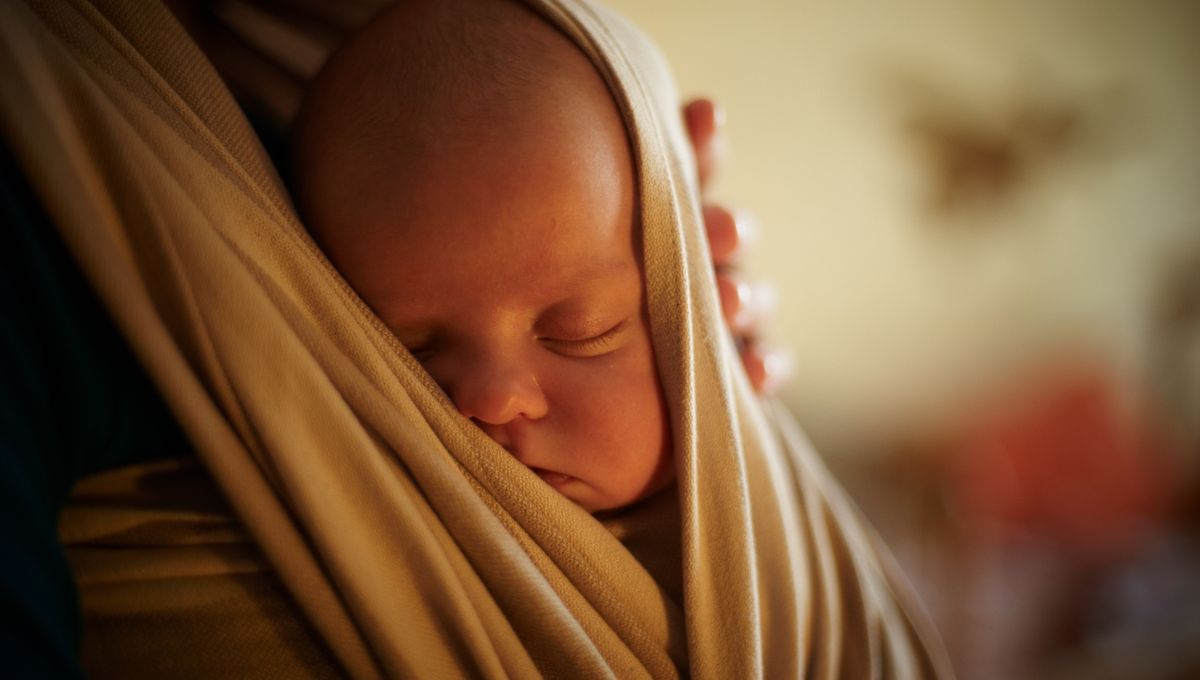
As any parent knows, carrying babies in your arms for a long time is exhausting and can be impractical. It must have been more so 10,000 years ago when parents were also hunting and foraging constantly. However, the mechanism of how our early ancestors did this was unknown as there is little hard evidence. Now, scientists may have found evidence for this age-old conundrum.
A team of researchers at the Université de Montréal used analytical methods to investigate a 40-50 day old female baby found at the cave site of Arma Verirana in Liguria, Italy, back in 2017. She has been nicknamed Neve, which means Snow; bright, radiant, and was buried with a large collection of beads.
This study used a high-definition 3D photogrammetry model technique, which is the process of creating a 3D model of objects or locations by multiple overlapping photographs. They combined this modeling technique with microscopic observations and microCT scan analyses of perforated shell beads found with Neve.
The beads found were four big perforated bivalve pendants and more than 70 perforated marine shells that were unique to this prehistoric site. These beads were very well worn and heavily used, which could not have been associated with Neve’s short life and must have taken hours to make. Therefore, it must have been worn by someone in Neve’s community and passed on to her – potentially as protection against negative forces or even as heirlooms.
“Given the effort needed to create and reuse beads over time, it is interesting that the community decided to part with these beads in the burial of such a young individual,” said Claudine Gravel-Miguel, who led the research, in a statement. “Our research suggests that those beads and pendants likely adorned Neve’s carrier, which was buried with her.”
The positions of these beads were also important data. Previously, many old excavation methods did not document the positions of any ornaments. Archeologists at recently-discovered burials are now ensuring that the ornament position data is captured.
For Neve’s burial, it was discovered that the beads were sewn onto a piece of cloth, leather, or fur that was used to wrap up the baby for her burial. This material could have been an undergarment, blanket, or sling. The research team think that this material was more likely to be a baby carrier.
One reason was due to Neve’s leg position. These were tucked up over the abdomen and hid some of the shells. This indicates that these beads were not just funeral ornaments but as part of a garment. Some beads were also found curved up the infant’s upper arm – this could have been the outline of a sling.
Looking at the ethnographic observations on how some hunter-gatherer societies use and adorn baby carriers, Neve’s family and community could have used these beads as protection. However, as Neve’s life was so short, this may have meant that the death indicated that the beads failed and it was better to bury them with the carrier, or it could have been used as a lasting connection between Neve and her community.
“This paper contributes truly original information on the archaeology of childcare,” Julien Riel-Salvatore another author of the paper said. “It bridges the science and art of archaeology to get to the ‘human’ element that drives the kind of research we do.”
The study was published in the Journal of Archaeological Method and Theory.
Source Link: Our Ancestors May Have Used Baby Slings 10,000 Years Ago, Ancient Infant Burial Reveals